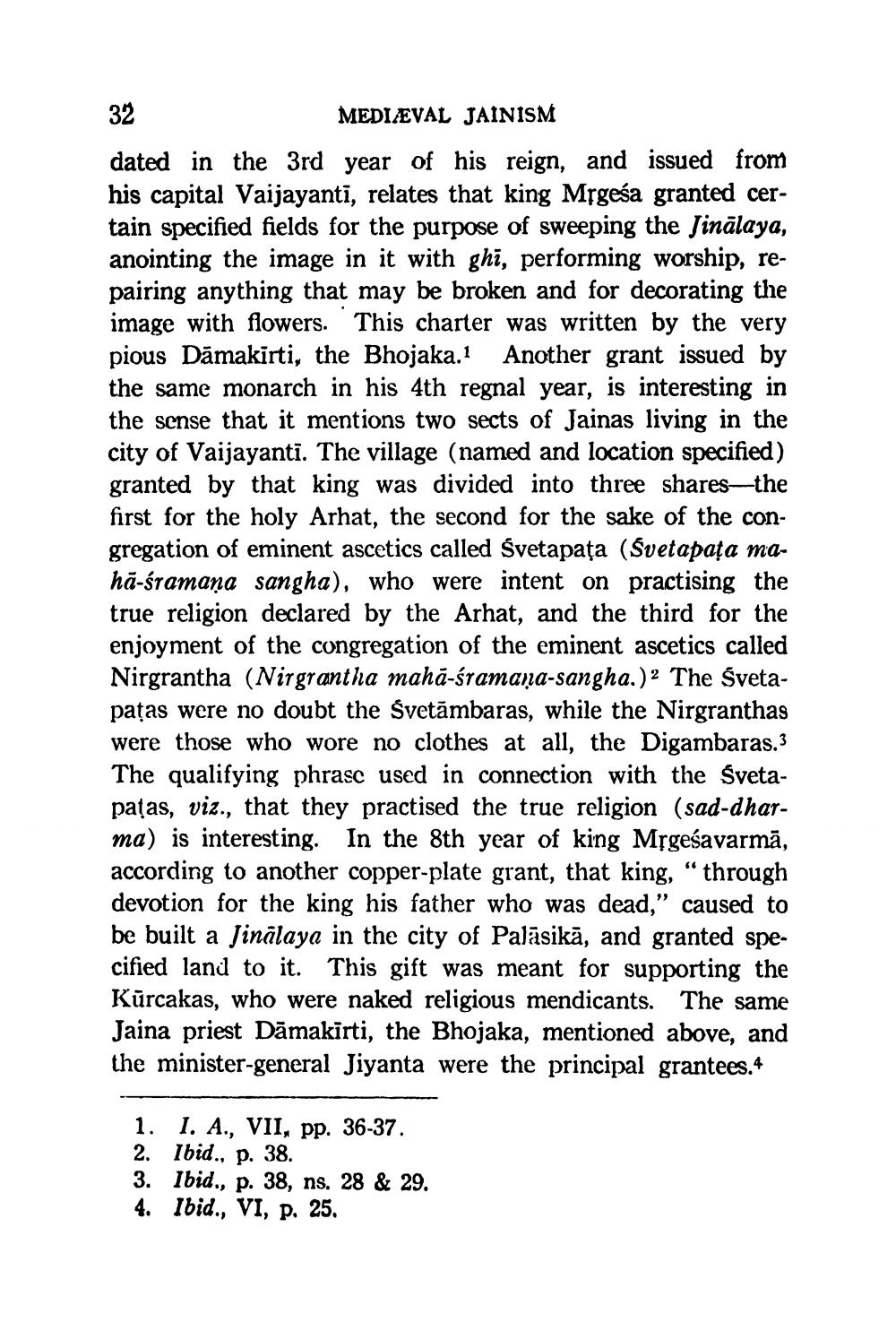________________
32
MEDIEVAL JAINISM
dated in the 3rd year of his reign, and issued from his capital Vaijayanti, relates that king Mrgesa granted certain specified fields for the purpose of sweeping the Jinālaya, anointing the image in it with ghi, performing worship, repairing anything that may be broken and for decorating the image with flowers. This charter was written by the very pious Dāmakirti, the Bhojaka.1 Another grant issued by the same monarch in his 4th regnal year, is interesting in the sense that it mentions two sects of Jainas living in the city of Vaijayanti. The village (named and location specified) granted by that king was divided into three shares-the first for the holy Arhat, the second for the sake of the congregation of eminent ascetics called Svetapata (Svetapata maha-śramana sangha), who were intent on practising the true religion declared by the Arhat, and the third for the enjoyment of the congregation of the eminent ascetics called Nirgrantha (Nirgrantha maha-śramaṇa-sangha.)2 The Svetapatas were no doubt the Svetambaras, while the Nirgranthas were those who wore no clothes at all, the Digambaras.3 The qualifying phrase used in connection with the Svetapatas, viz., that they practised the true religion (sad-dharma) is interesting. In the 8th year of king Mrgeśavarmā, according to another copper-plate grant, that king, "through devotion for the king his father who was dead," caused to be built a Jinalaya in the city of Paläsikā, and granted specified land to it. This gift was meant for supporting the Kūrcakas, who were naked religious mendicants. The same Jaina priest Dāmakīrti, the Bhojaka, mentioned above, and the minister-general Jiyanta were the principal grantees.4
1. I. A., VII, pp. 36-37. 2. Ibid., p. 38.
3. Ibid., p. 38, ns. 28 & 29. 4. Ibid., VI, p. 25.




